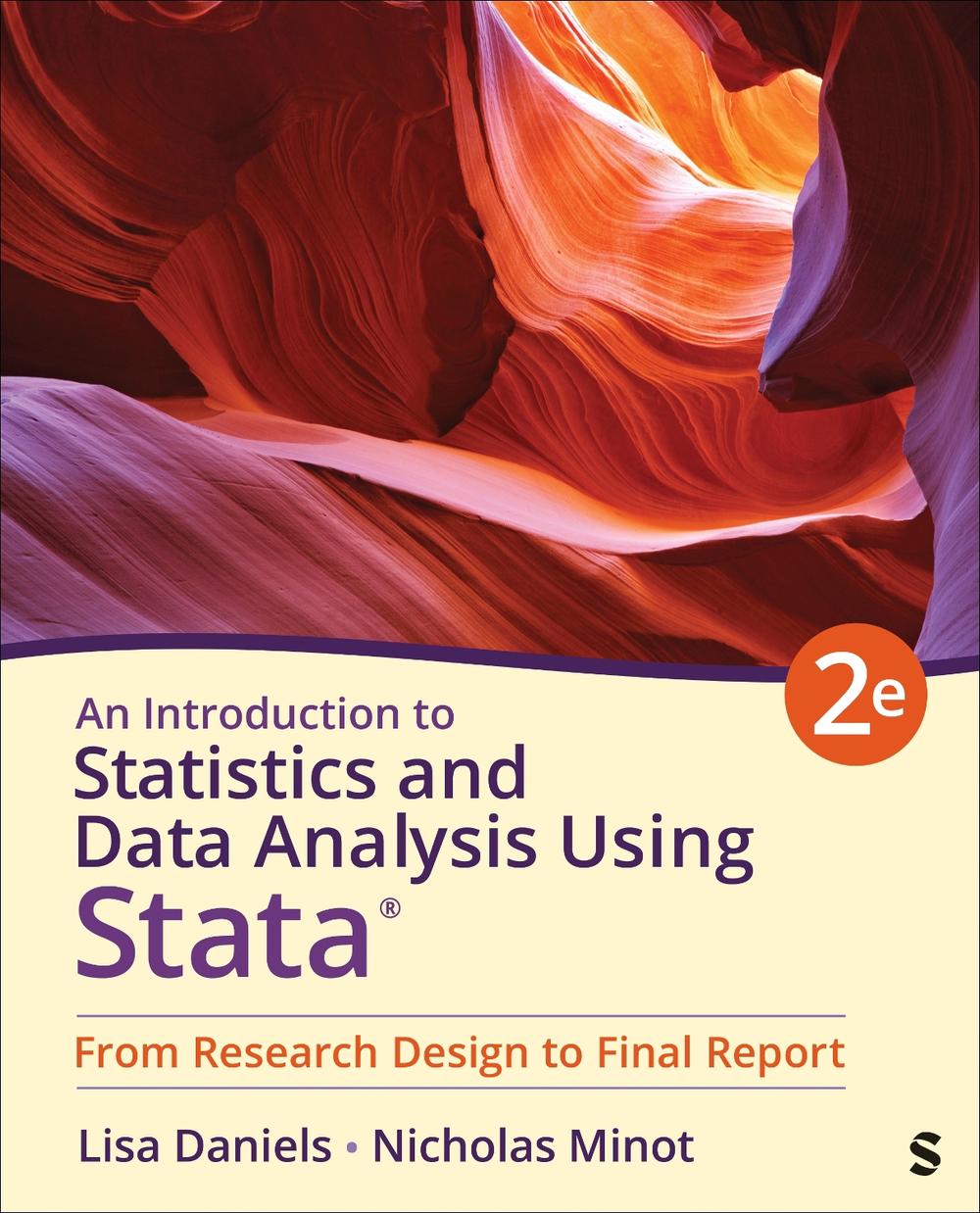
An Introduction to Statistics and Data Analysis Using Stata®
from research design to final report
$310.51
- Paperback
384 pages
- Release Date
13 April 2025
Summary
Stata Statistics: From Research Design to Results
The Second Edition of An Introduction to Statistics and Data Analysis Using Stata®: From Research Design to Final Report provides an integrated approach to methods, statistics, data analysis, and interpretation of results. The book features examples from social science research and news articles along with concise descriptions of statistics, allowing readers to understand the context of data analysis while a…
Book Details
| ISBN-13: | 9781071883709 |
|---|---|
| ISBN-10: | 1071883704 |
| Author: | Lisa Daniels, Nicholas W. Minot |
| Publisher: | SAGE Publications Inc |
| Imprint: | SAGE Publications Inc |
| Format: | Paperback |
| Number of Pages: | 384 |
| Edition: | 2nd |
| Release Date: | 13 April 2025 |
| Weight: | 690g |
| Dimensions: | 231mm x 187mm |
You Can Find This Book In
What They're Saying
Critics Review
The book by Daniels and Minot helps students understand how to conduct empirical research. The authors′ concise and straightforward approach makes complicated topics easy to grasp, while their emphasis on a hands-on experience approach utilizing Stata further enhances the practicality of the material. – Hector H. SandovalAn Introduction to Statistics and Data Analysis is a perfect example of a text that helps students learn how to use Stata and interpret statistical output! I often tell students that ′real′ statisticians do not use paper and pencil or a graphing calculator to crunch numbers. We use Stata and this book integrates Stata into the learning process. – Michael DanzaThis textbook is a valuable resource for teaching students the basics of quantitative analysis with Stata. Its clear writing style ensures content accessibility. The simple explanations and practical examples maintain student engagement. Additionally, the book seamlessly integrates theoretical concepts with real-world applications, enhancing understanding and fostering critical thinking skills. – Nurgul R. AitalievaThis is a great book for an undergraduate student population just getting into quantitative methods and Stata. – Jill WeinbergThe writing is very clear and accessible, yet the statistical coverage is thorough enough for graduate students. The examples of how to use commands and how to interpret output are great references for students after they finish the course. – Janet P. StamatelI LOVE how you use applied examples as I endeavor to do this every week for them and have found some great examples within this work! It brings the fun world of data analysis right to them so they can see why it is important. I think the authors also did a great job on varying topics across social science disciplines, not neglecting hardly a one anywhere—no room for improvement and only wish more analysis books did featuring so well. – Kara SuttonTakes the approach we do that you have to start with good research methods, assumes no prior stat knowledge, focuses on the foundational basics that students ′already know′ but don′t really understand (this is a big strength of the book!), and teaches those basics in conjunction with Stata coding. – Chelsea Rae KellyThe second chapter offers a comprehensive guide on presenting students′ research papers. It includes concrete examples illustrating each section of a research paper, making it particularly beneficial for students unfamiliar with this type of writing. Furthermore, the paper by Talan and Kalinkara (2023) on ChatGPT serves as a bridge between academic research and our daily lives. It highlights that academic knowledge, including what students learn from this book, is not separate from our everyday experiences. – Jaeyun Sung
About The Author
Lisa Daniels
Lisa Daniels is the Hodson Trust Professor Emeritus of Economics at Washington College in Chestertown, Maryland. She specializes in development in Africa, where she worked for 10 years, beginning as a Peace Corps volunteer. During her time in Africa, she studied agricultural markets, market information systems, poverty trends, and micro- and small-scale enterprises. As part of her research on micro- and small-scale enterprises, she directed national surveys of 7,000 to 56,000 households and businesses in Bangladesh, Botswana, Kenya, Malawi, and Zimbabwe funded by the U.S. Agency for International Development. In each survey, she was responsible for the questionnaire design, sample selection, data collection and analysis, and report preparation. Her work from these surveys and other research in Africa and Asia appears in consulting reports and in peer-reviewed journals. In addition to research and fieldwork, she has taught a range of courses over the past 28 years, including a research methods course and a data analysis course that she has taught over 20 times. She has also presented her work related to teaching at more than a dozen workshops.
Nicholas Minot is a Senior Research Fellow at the International Food Policy Research Institute (IFPRI) in Washington, D.C. Since joining IFPRI in 1997, he has carried out research on agricultural market reform, income diversification, spatial patterns in policy, and food price volatility in developing countries. This research often involves carrying out surveys of farmers, cooperatives, traders, and consumers to better understand changes in food marketing systems. In addition to research, he is involved in outreach and capacity-building activities, including offering short courses on the use of Stata for survey data analysis. Before joining IFPRI, he taught at the University of Illinois in Urbana–Champaign, served as a policy adviser in Zimbabwe, and analyzed survey data in Rwanda. Overall, he has worked in more than two dozen countries in Latin America, sub-Saharan Africa, North Africa, and Asia.
Returns
This item is eligible for free returns within 30 days of delivery. See our returns policy for further details.




